Hand stitching has had somewhat of a renaissance over the last five years, however, it has always been an integral aspect of the work and process of textile artist Amanda J Clayton.
The intimate connections that hand-stitch has with aspects of femininity and traditional gender norms are always prescient, however, whilst Amanda has explored some of these themes, they are not at the forefront of her work.
She is more concerned with challenging the qualities of cloth. Recently, a more defined process of working has emerged and the pieces she has produced have developed a fresh perspective.
Key aspects of Amanda’s work are her explorations, experiments and decisions with cloth and thread that allow the piece to emerge and develop over time. This creates a timeless piece that is intimate and intensely personal.
The sensitivity in which she challenges cloth and stitch has recently attracted a series of projects exploring health issues.
In this interview, Amanda gives an honest account of her artistic journey so far and we learn how she gains inspiration from people, places and things.
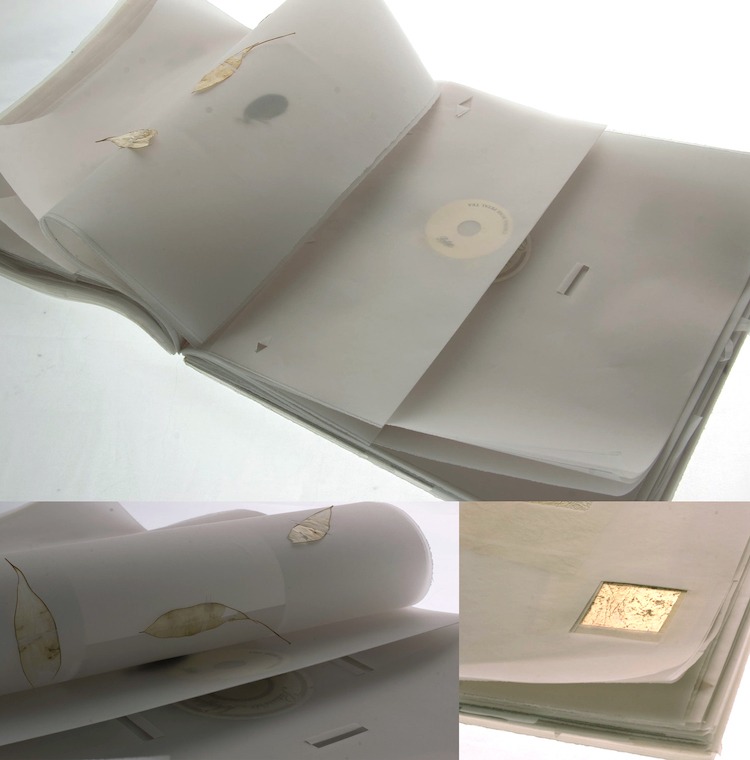
The infinite realm of possibilities
TextileArtist.org: What initially attracted you to textiles?
Amanda J Clayton: I don’t think it was textiles itself that attracted me. I wanted to explore my individuality through art and design, cloth and stitch seemed like a natural development for that.
Perhaps there is some part of my history, such as watching my mother stitch as a child, that gave me a natural affinity with the medium, but it never felt like a conscious choice.
I also do not only work in textiles. As part of my creative process, I paint and I draw, but I found that I prefer to develop these initial ideas through cloth and stitching. It is interpreting my ideas in this way that gives me the most fulfilment in my work.
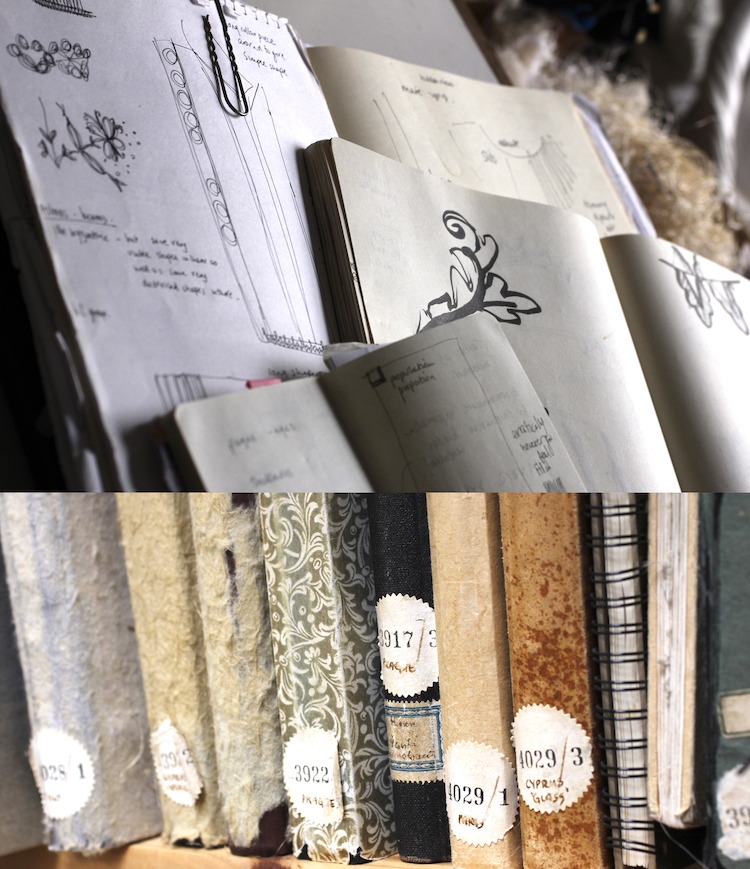
How was your imagination captured by stitch?
There is an abundance of opportunity that presents itself with cloth and stitch, whatever I am working on I always have the sense that there is another solution. The infinite realm of possibilities is the fuel that allows me to continue to express my ideas. It feeds your creative momentum.
But stitching has always been a part of my life. Since I could pick up a needle I have been stitching, it was something that we did within the family setting. So, stitching resonates on a deeper level, and I feel like I am not a complete person without it.
I have tried out many other creative practices, and still like to try new processes when I can, but no other process has had the same effect. Perhaps it is the intimacy of hand-stitching that captivates me, and the simplicity of it, you need very little of anything else to complete a project apart from a needle and thread.
It has become a way to connect with my work. For example, a recent commissioned piece was primarily machine stitch, but it was not until I added some hand stitched elements that I truly connected with the work.
Looking with a different eye
What or who were your early influences?
There are many early influences on not just my work, but ultimately my development as an artist.
I was incredibly fortunate to have a high school art teacher who was not just an inspirational teacher, but also an artist in his own right, Anwar Shemza. He was more than just a teacher, it was more like an artist/mentor relationship. He not only provided valuable early lessons about the importance of drawing, primary influences, and translating ideas into non-figurative work, but also continued to be a supporting presence throughout my degree course and beyond.
As well as influencing my artistic practice, I think he also had a big impact upon the way I approach my teaching because I never see my relationship with a student ending when their course does. As a result, I have maintained contact with many of my former students and love to see the successful ventures they have embarked upon since leaving the textile studio.
Another artist that had a significant influence on me and my work practices was my Foundation tutor, Carola Fielden. Again, our relationship extended beyond the course where she taught me, as I subsequently went to work for her in her studio. She was ex-Royal College of Art and had very high standards. Her work process is certainly something that has stayed with me.
She trained me to look at things with a different eye, and I have fond memories of how we would go around to second-hand shops searching for hidden treasures and discussing the qualities of the fabrics and techniques of the items we found.
At home, I think I would find it hard not to acknowledge my father’s influence. He built our family home when I was still very young, but I remember being fascinated by the construction of the building that we would then go on to be a home with so many happy memories. Watching how this impressive structure was put together still occupies my mind.
As my father worked in construction, I also have memories of blueprints and technical drawings around the house as I grew up. This is something that I have utilised in my own work, often using the construction as elements of the work to be celebrated, rather than something to disguise.
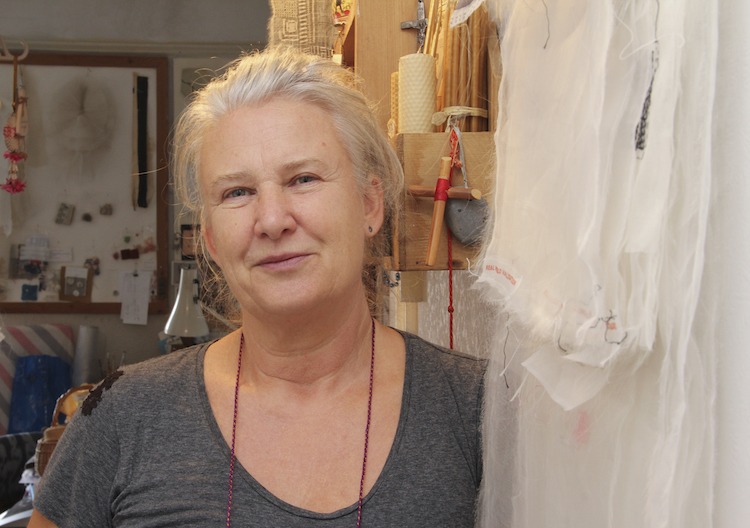
What was your route to becoming an artist?
I think I always was an artist, I was just lucky to have met a good set of people along the way who helped me realise what I could achieve, and that it was a possibility.
For example, until my teacher Anwar Shemza told me, I did not realise that going to university to study art and textiles was even an option. For young artists, having the right advice and influences is such an important aspect of getting started on the right path.
I think another important aspect of being an artist is knowing your own mind. My father was a big influence here in that he always instilled in me the value of making my own decisions and knowing why I was making those decisions.
This is such an important skill as an artist, as there will always be lots of people giving you opinions, and advice, about your work. To be able to take all of this on board, process it, and then come to your own conclusions helps to develop your own integrity. It also ensures that you know your own mind and while you can listen to others, you won’t be swayed by every opinion offered.
It also ensures that you know your own mind and while you can listen to others, you won’t be swayed by every opinion offered.
Tell us a bit about your chosen techniques?
I enjoy working with cloth but not as a flat surface. Cloth comes alive when I am using those qualities of bias, edge, grain, and transparency. It is these qualities that I like to use, and then the infinite possibilities that can be created incorporating different thread.
I use stitch to make a mark or connection or to construct. It could be said that I have a very basic stitch range, but they serve many different functions. For me, the joy is in finding new ways of manipulating the cloth and creating new techniques with this simple stitch range.
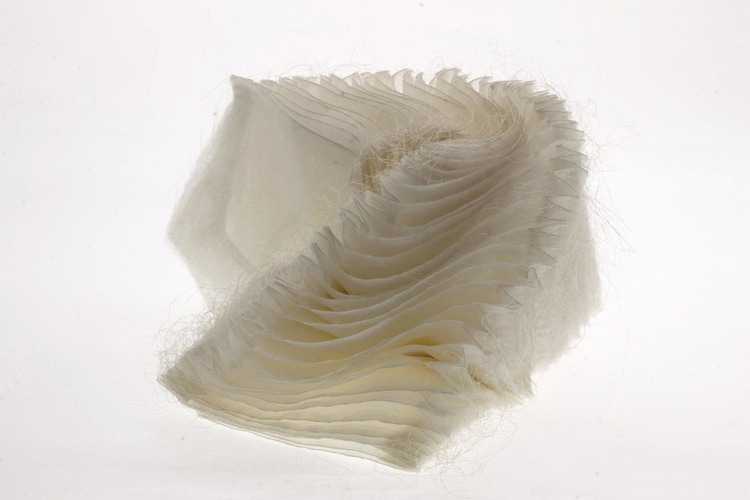
An immersive environment
Do you use a sketchbook? If not, what preparatory work do you do?
Yes, keeping a sketchbook is an integral aspect of my working process. I have a sketchbook that I take with me to collect ideas. So, when I visit museums, galleries, or new cities, I will often take out my sketchbook and note down ideas, make small sketches, and record interesting information.
I then bring this back to my studio and work in a different way. I would say that what I use in this instance is a Study Diary, and I use the information gathered in my sketchbook to inform the ideas and processes I then develop in this book.
The Studio Diary never leaves the studio but is an integral part of my process. This work from the Studio Diary then creeps out of the book and onto the walls. I often have a large notice board with samples and inspirational images pinned to it. The immersive environment that this creates within the studio helps to move ideas along and lead to the resolving of the work.
This is how I like to work, but it is important that people find a way that works for them. While I emphasise the importance of keeping a sketchbook and/or a studio diary to students, it is also important to use them in the right way.
A sketchbook is only a vehicle, it has to show a thorough working process, with information, taking risks, and creating valuable content. It is there to move work on and help you to identify your personal philosophies.
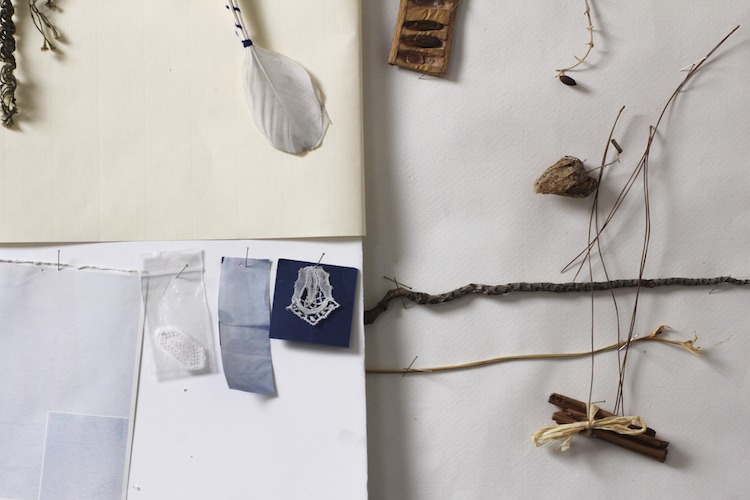
Tell us about your process from conception to conclusion?
Looking at a variety of sources that are about qualities, such as fragility, transparency, or construction, is often a starting point for me. This then leads to making emotive connections to these ideas.
For example, a recurring theme in my work is collars and at the moment I am working on how these can express ideas of isolation, vulnerability, hidden and concealed information.
Over the years you build up a vocabulary of looking at fragile objects and how to translate them into cloth. Many of these ideas are influenced by personal experiences. Most of my work is abstract, not a representational image. It is a response to an emotion or feeling, not visual stimulus.
This again is possibly influenced by Anwar Shemza; a teacher that didn’t emphasise the use of figurative imagery in our work, but always insisted that there was a concrete underpinning to anything we produced.
Maybe this has informed my willingness to challenge my working parameters over the recent years. Part of the process is constantly seeking new ways to express these concepts through cloth and stitch. I have always taken risks in my work, but I think that teaching has given me a greater sense of awareness to take even more risks.
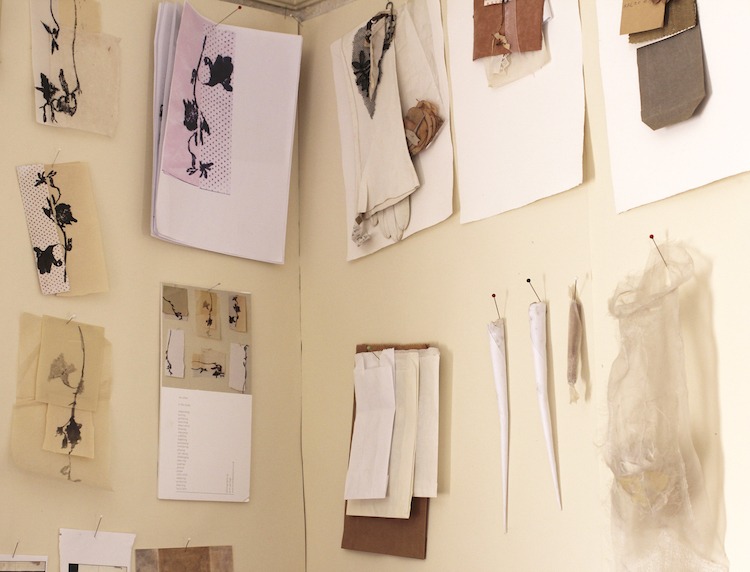
I think it is sometimes assumed that because I work in neutral colours that my work is not as adventurous, or there is not as much skill demonstrated. But it is the subtly of colour that I like to work with.
One of the things I have had my students do in the past is to name as many different names for a colour as they can in order to make them think about all the nuance within a single colour on the spectrum. Or, I would get them to mix one-hundred whites and then name them. I focus on elements of the work, such as structure and transparency, and use my materials to express these.
An integral aspect of the final product of work is the way in which it is photographed. With my work having a predominantly monochromatic colour palette the way in which it is lit and photographed is so important. It is vital to build a good working relationship with a photographer, and I have been lucky to have worked with Dawn Jutton in this respect over many years.
She is an incredible photographer and has an intuition about how to capture the essence of my work. When you can only submit images of your work to be considered for exhibitions, having their subtle qualities captured in a photograph is invaluable.
A constant pursuance of the unreachable
What environment do you like to work in?
It is almost like I am two people in the different phases of my work. I like to start in the studio, with the ideas and primary sources I have collected through my travels in my sketchbook. I need to have my studio space organised to begin with, so I can find things I need easily. But it soon descends into creative chaos! But that is all part of the process of developing the ideas.
I have a big notice board that I pin all inspirations to, such as lace, images, fragments of textile. I am always setting myself goals, so how fragile can I make this piece; a constant pursuance of the unreachable. It may come from my time teaching, where I would always encourage the students to try new things, even if they thought they were not possible. To push the medium further, in that respect I set myself these goals and targets so that I am constantly moving my work forward.
Once I have found an idea that resonates and I am confident in the direction the work is taking I am quite gregarious. When I know what I am stitching I can move my work wherever I am. I have worked in pop-up studios, on the train, and while I am on holiday abroad.
Once ideas have come to fruition, I can work anywhere, and enjoy the social aspect of stitching. It also allows me to be more productive, as I am not restricted to only working when I find the time to be in my studio.
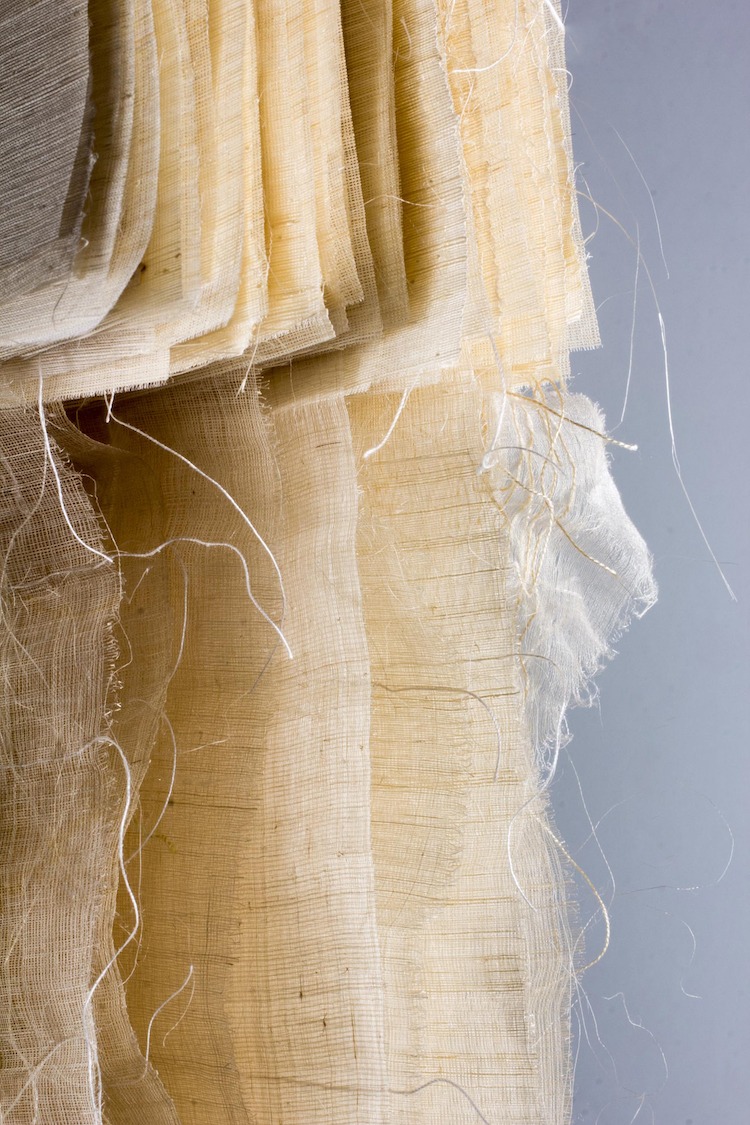
What currently inspires you?
I like to draw inspiration from all areas! Currently, being at home more and rediscovering things from my past as I am sorting through my studio has given me the opportunity to select and encounter things I have not had the time to work from before.
I am also trying to create work that is more useful. I thought that might involve the standard aspect of fashion and domesticity, but actually, I have been drawn to work that is all about communication. The work I am creating is about opening dialogues between health professionals and patients, which has a different kind of function, but is still useful.
Through the work that I am doing with a group, ComMA (Communication Medicine and Art), and a collaborative project with Dr Jacqueline Collin at King’s College London, it has been great to find a new aspect to my work and how we can work together to use textile art and processes to communicate wider issues.
But then this is not that far removed from some of the work I was doing previously which looked at aspects of memory. This was a response to my mother’s struggle with Alzheimer’s at the time, so I drew on personal experience and looked at objects from our past as primary sources of the work.
I am now taking this process further by engaging with other groups to find ways in which to express personal reactions and emotive responses to other health conditions through textiles.
It is often about taking things back to the complexity of emotions and how these can be reflected and communicated through cloth and stitch. I have probably been drawn to this because there are clear similarities to the qualities explored in the work I have previously done, such as transparency and its myriad connotations, and the notion of the hidden and concealed.
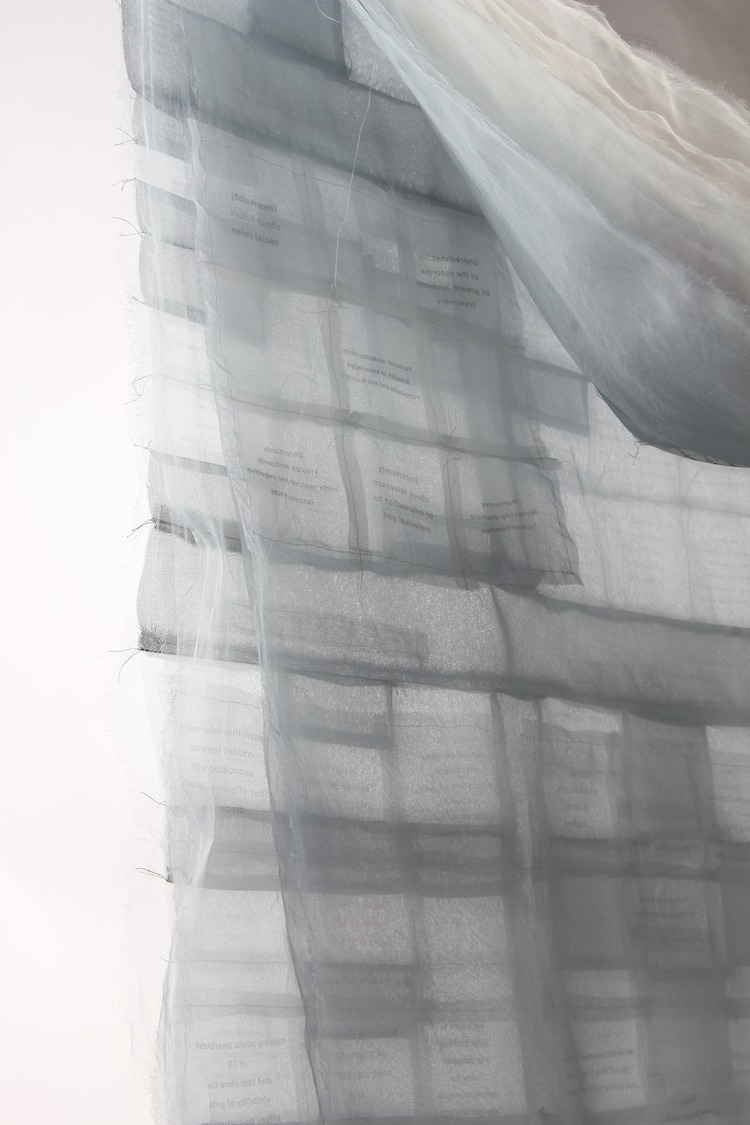
Who have been your major influences and why?
I think the people who were my early influences, mentioned above, have had the biggest impact upon my life and work. The philosophies and approaches I learnt from Anwar Shemza at school have resonated deeply throughout my artistic life.
However, like with my approach to my artistic inspirations, I find that the people I have had around me throughout my career have been great influences in different ways. I have been fortunate to have taught with a range of artists, in many different fields, and their values and artistic practice have influenced my own.
I taught for a large part of my career on an Art Foundation course and we had such a great mix of tutors. It has meant that I have mixed with people from different disciplines, such as painting, illustration, photography, and ceramics. It has helped to build a broader approach to my own work, and I am always fascinated by other people’s work, their processes, and their influences.
Engaging with other contemporary artists, especially in a range of fields, is a great way to develop new perspectives. It is these experiences that form your philosophies and they inform your work.
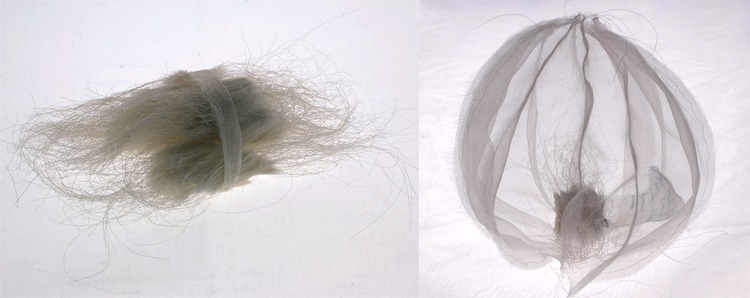
How has your work developed since you began and how do you see it evolving in the future?
Thinking about the qualities that I like in the work I am doing, it is safe to say that my work has become more sculptural. It is very rare that I create a flat piece of work now, whereas many of my earlier pieces were about exploring the surface and texture of the stitch, now the work takes on a more sculptural form.
The way it’s evolving at the moment is due to a lifestyle change; spending more time in the studio and therefore more time stitching. That will allow me to produce much more work.
I don’t like to know what my outcomes will be when I start, so it is hard to know where my work will go, it develops organically in the hand. I work in an instinctual way that develops and evolves as the work requires. With no controlling factors in my work, I am interested to see where my work will go in the future.
Putting in the hours
What advice would you give to an aspiring textile artist?
Be true to yourself, and don’t measure yourself against other people. Go with your gut instinct of what you want to produce and what you love doing. And know what you want to get out of it.
For example, if you primarily want to make money and go down a commercial route, you will have a very different outlook to those who want to pursue the life of a fine artist. You can have success in either of these routes, but you have to know where you want to go and how you see your career progressing so that you can make informed decisions about where to market, exhibit, and sell your work.
Set your standards high. Be ambitious. Be generous; generosity of spirit results in a more fulfilled experience. And a little mantra of mine that I always say, is you’ve got to put the hours in! So, work hard.
Can you recommend three or four textile books?
I think I am going to recommend a few things out of the box here, but you need to challenge yourself as an artist and look for left of field inspirations, which explains the first pick here.
[easyazon_link identifier=”B01MY26K6J” locale=”UK” tag=”wwwtextileart-21″]The Living Dead: Inside the Palermo Crypt , Marco Lanza and Laura Facchi
What I was drawn to in this book was the aged quality and well-worn materials within the images. There is such a wonderful history on display. It shows that you can get reference points from the most unlikely places. .
I discovered this book through my niece, who was writing her MA dissertation in Art History on the symbolism of bodily remains as decorative objects in European crypts. After seeing the wonderful photography in it and the qualities and ideas it sparked, the book found its way into my collection.
It shows a history of textiles and its transitory nature. Unlike other mediums, like ceramics, painting, or sculpture, textiles tend to decay and degrade meaning that it does not have the same longevity. The fragility of the medium, and the close connections that can be drawn with human life are startlingly apparent in this book.
[easyazon_link identifier=”1909932132″ locale=”UK” tag=”wwwtextileart-21″]Anwar Jalal Shemza , Iftikhar Dadi ed.
Yes, this is the same Anwar Shemza that I talked about as being an early inspiration as my high school art teacher and mentor. This volume is from a recent retrospective about his life and work at Tate Britain.
He worked on many different materials, from cotton pillow cases to wood, there was no preciousness about it. He has recurring themes that he challenges and pushes showing that there are many miles to be taken by a talented artist with a single idea.
This book demonstrates how he took in-depth ideas and translated them into non-representational imagery that was heavily influenced by his cultural heritage. My personal connection aside, his work is only just starting to get the recognition that it deserves, so I would definitely recommend more people seek it out.
[easyazon_link identifier=”B01N8Y0P4N” locale=”UK” tag=”wwwtextileart-21″]Muslin, Sonia Ashmore
I really admire traditional techniques of any kind, because I think you need have a basic vocabulary before starting a project.
This book looks at the quality of worked material. And it always reminds me of the V&A museum, which is one of my favourite destinations in London.
Partenheimer, Drucke and Bucher
This is probably the most worn book on my shelves! It is a must read for inspiration. The quality of line and simplicity, positive and negative space, the fundamentals of art and design are there throughout this book.
If I am in need of recharging my creative batteries, this is always a go-to book.
What other resources do you use?
One of the primary resources that I use in my work is found objects. I have many collections of things from my travels that I refer back to and add to.
These might be beautiful wrappers or packaging, stones from a beach, or seeds from a melon. Some are incorporated into the work, others are a primary resource used as inspiration in the studio.
I also frequently visit museums, in whatever part of the world I am in I try to track down a museum and see what is on offer. I use my sketch book to track ideas and information. I always find that my favourite places are the slightly off-track, smaller museums.
I use the internet in a functional way to find particular things, but I still find greatest pleasure in leafing through a book or a magazine. I am always on the lookout for things that aren’t usually associated with textiles, to find inspiration in the less obvious.
I also find that other people can be a great way to find new resources.
For example, talking to my niece, Dr. Natalie Armitage, who opens up new avenues that I hadn’t thought about. I love to watch films for inspiration, and as a scholar interested in film, she always has some great suggestions. She also has a blog that I enjoy reading; she features interviews with artists, comment about the arts, and reflects on her own creativity – well worth a read.
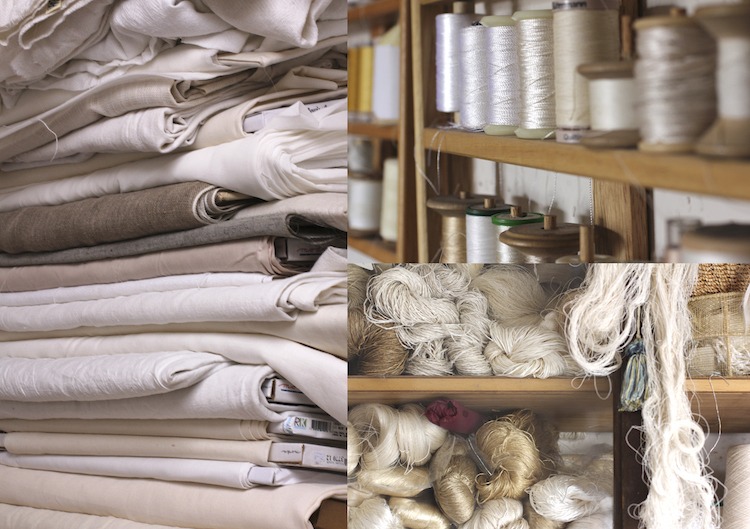
What piece of equipment or tool could you not live without?
A needle and thread. I always have a small sewing kit with me, needle, thread, sewing scissors, and luckily the cloth that I work with always folds up quite neatly so it travels well.
Although recent restrictions on flights have meant that I have had to change my travel habits slightly, adapting my kit to meet customs rules, not many pieces of work are finished while in the air these days!
I have found, however, that I can work quite happily and successfully with just a stripped back sewing kit like this. I like to respond to the environment around me, so when I travel I will often incorporate things I find along the way into the work I am developing at that time.
Do you give talks or run workshops or classes? If so where can readers find information about these?
Yes, I am doing a number of workshops and talks over the next few years, the diary is filling up fast!
Teaching and helping students develop their own work and practice has always been integral to my career, so I enjoy delivering workshops.
For more information visit: www.amandajclayton.co.uk or Facebook
Got something to say about the techniques, materials and processes used by this artist – let us know by leaving a comment below.
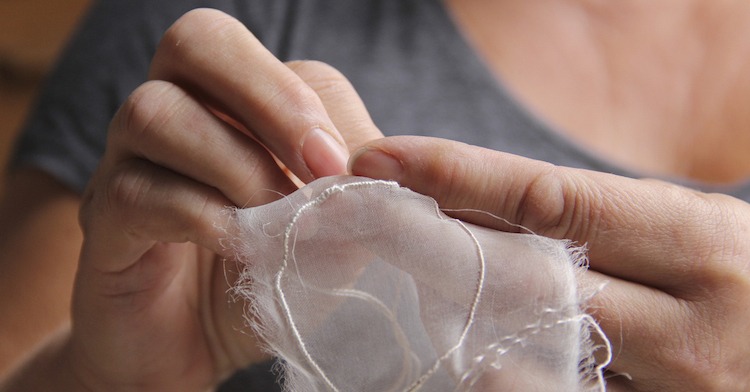
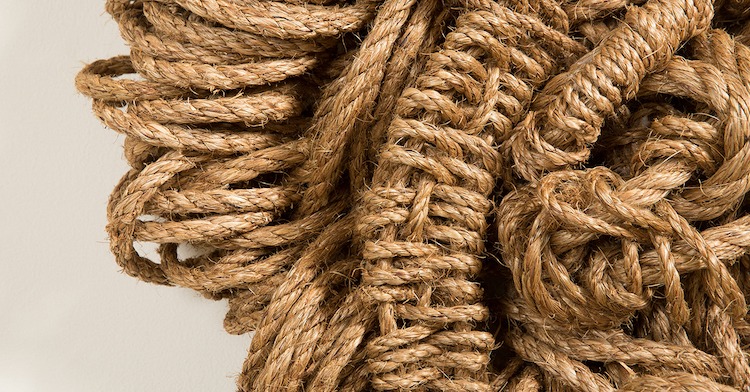
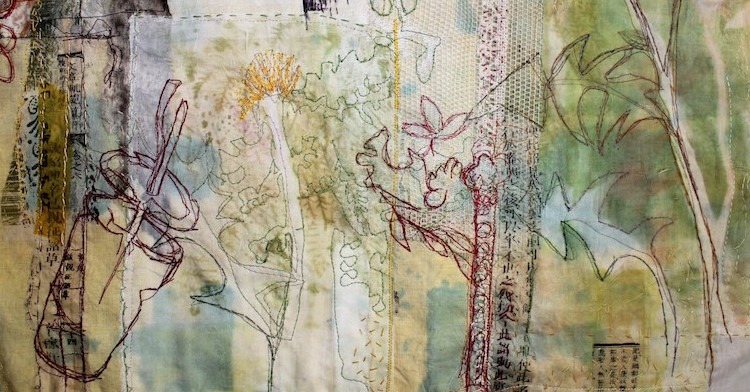
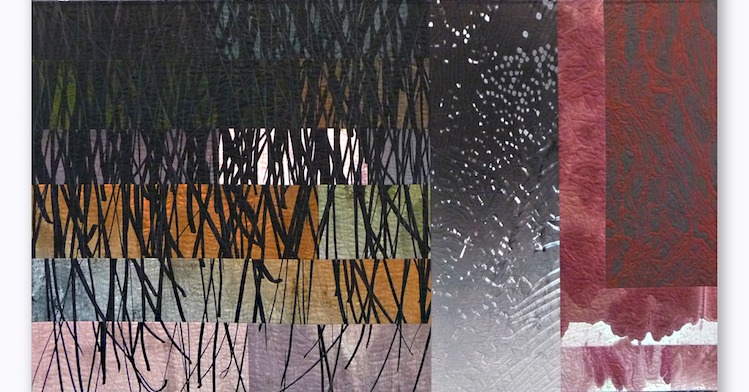
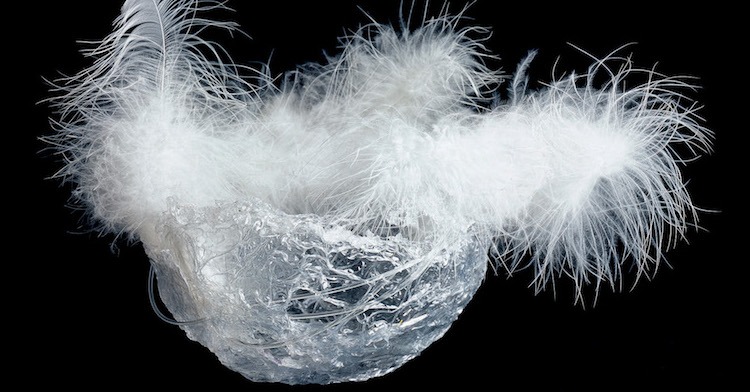
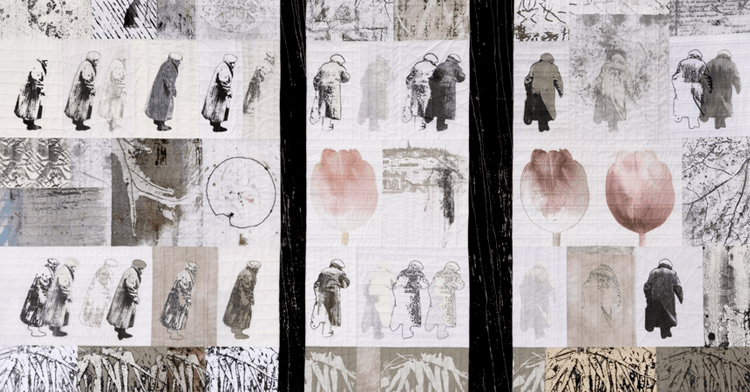
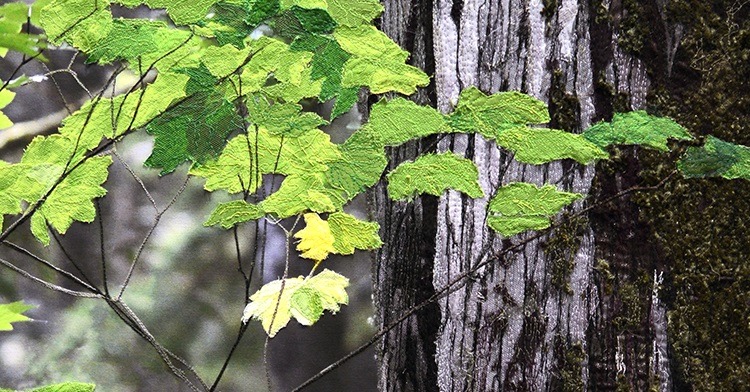
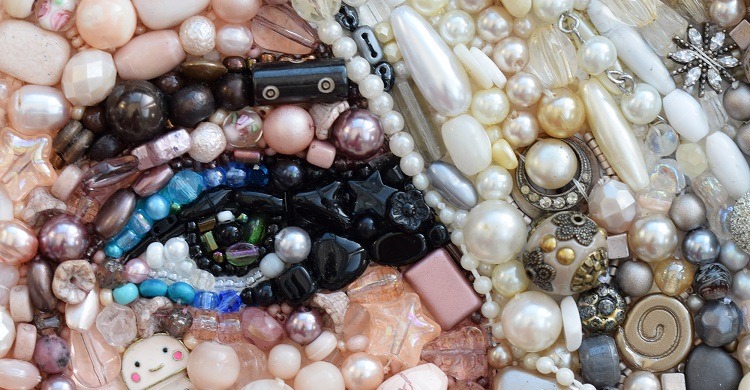
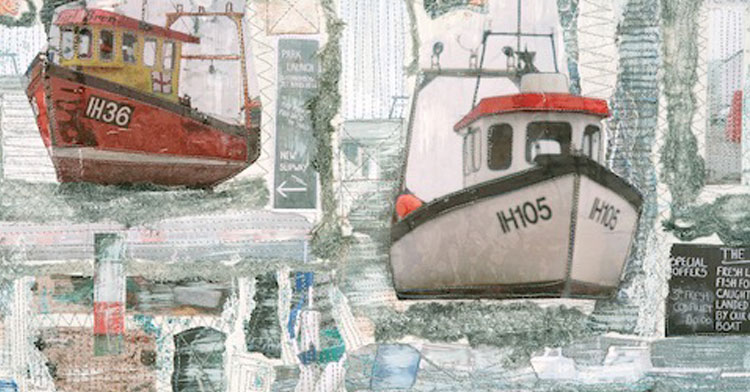
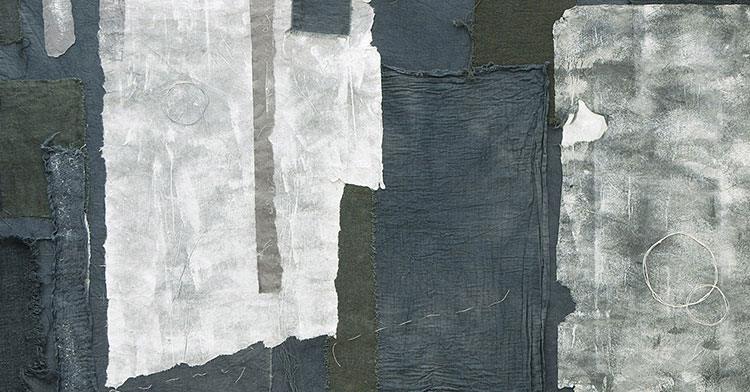
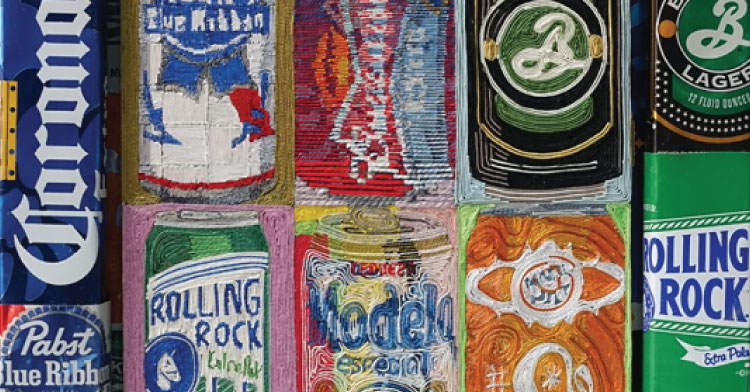
Comments